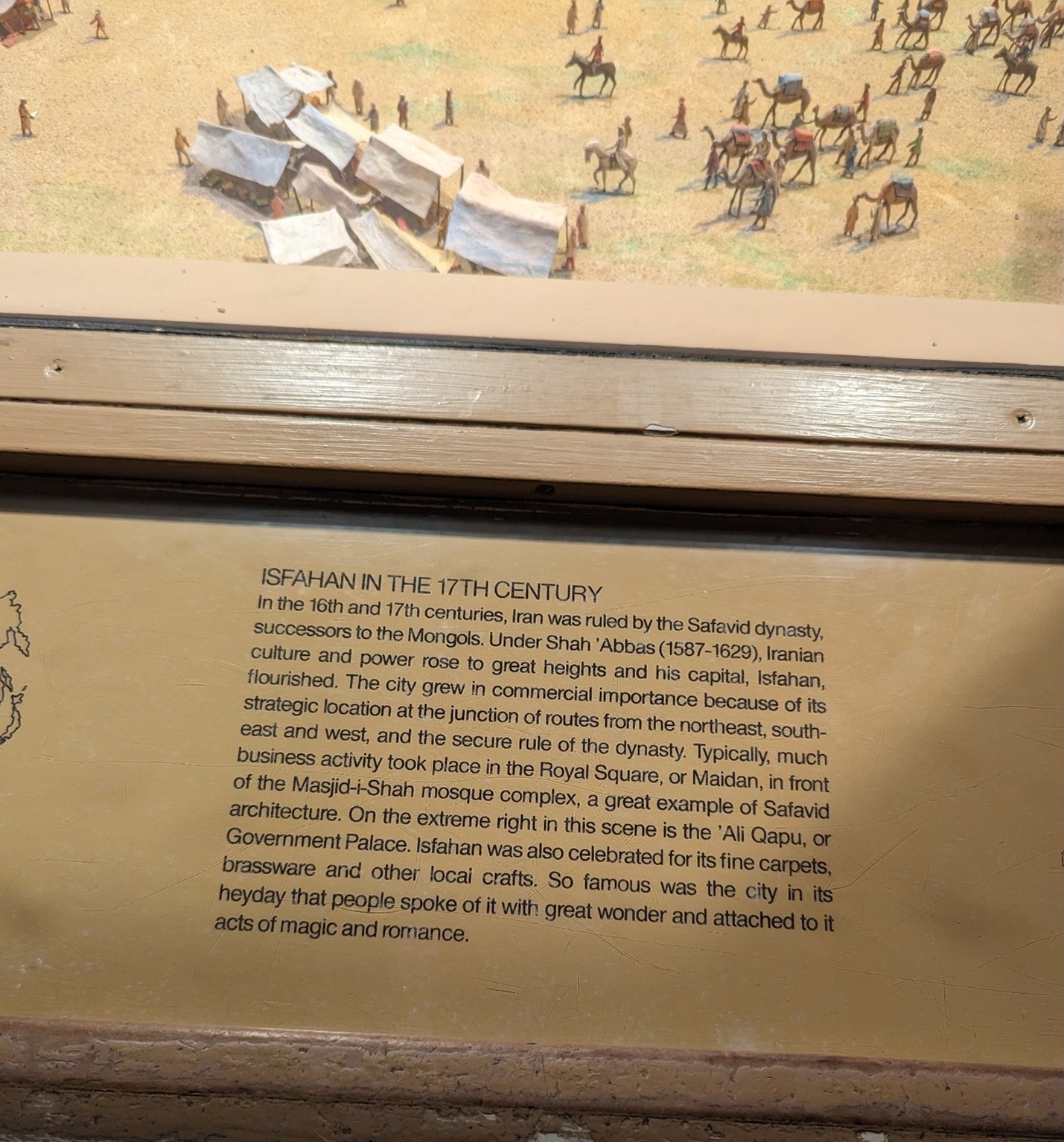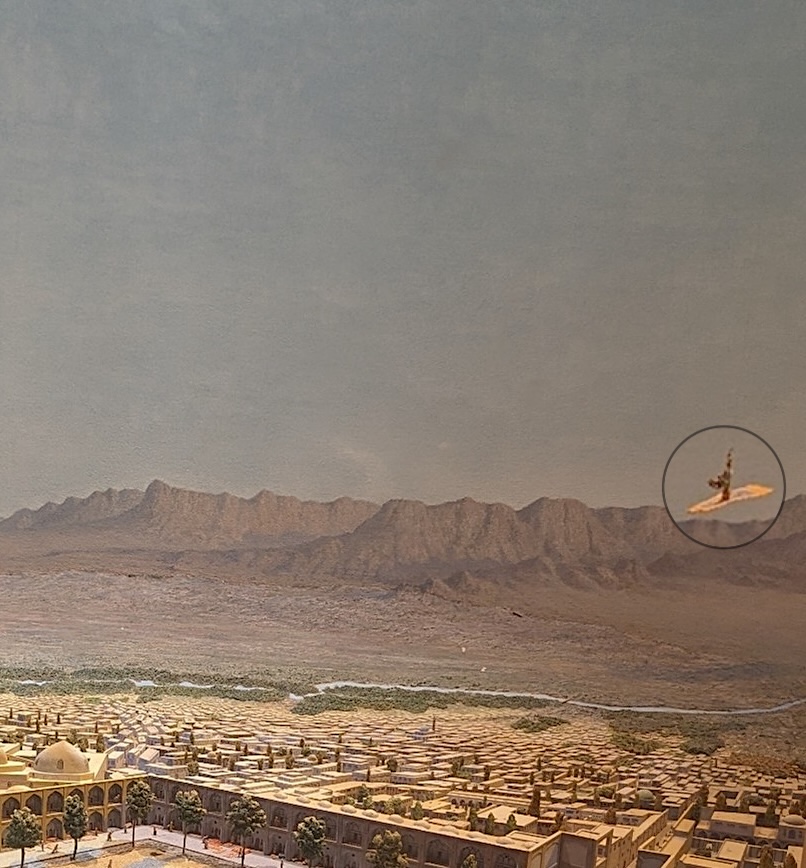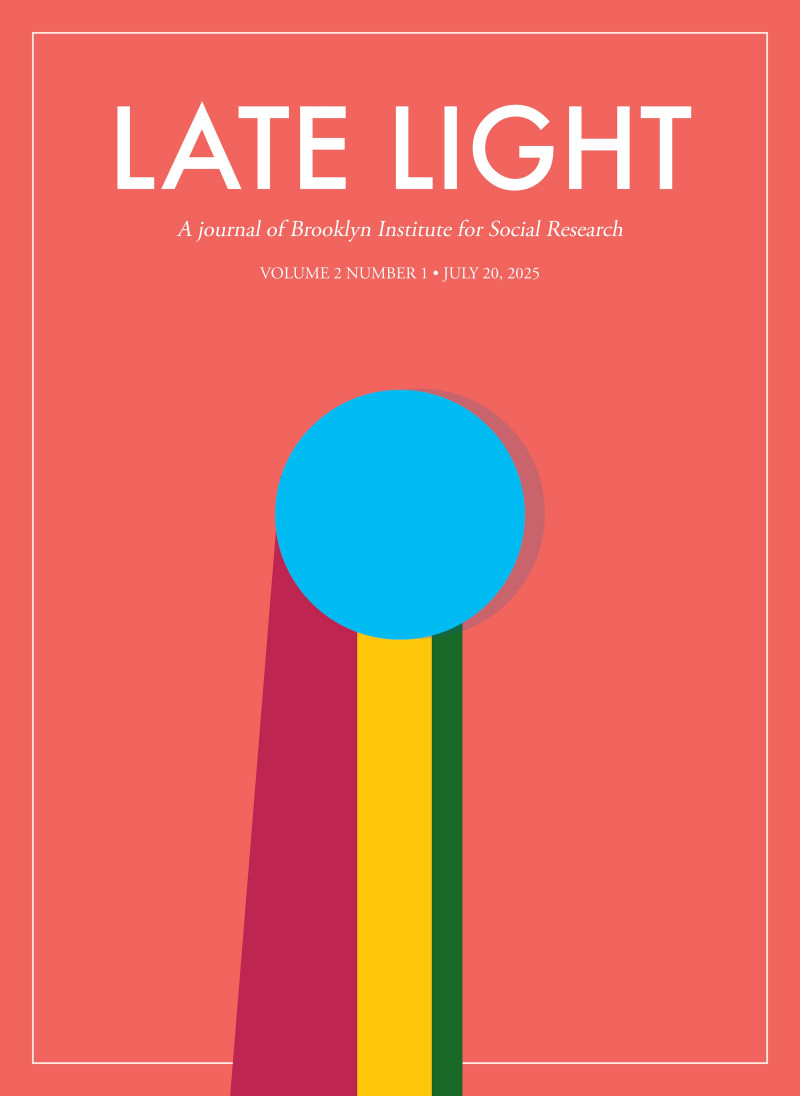About once every year, I go to the American Museum of Natural History to see if the diorama of Isfahan is still there with its extraordinary detail: off to the side, floating above the recreation of “the city in its heyday,” in the words of the label text, is a little figure on a magic carpet. I went just this past week and there he still is. I’m always a little surprised that something so comically absurd is still so prominently displayed but perhaps I shouldn’t be. This figure is not particularly striking; he is part of the frozen landscape, existing in some strange, timeless zone. The racism of the Museum is widely acknowledged even without getting into thornier questions about exhibitions and historical peoples and “natural” vs. “social” history. Magic Carpet Guy remains in the Hall of Asian Peoples (there is of course no hall of European peoples). To be perfectly honest, he’s simply part of an ad. Landscape to be used here! No real people in need of consideration. His “magic and romance” is part of the sales pitch just awaiting the right historical agent to fill in the blanks however they might please. The label doesn’t even seem concerned with its claims; the Safavid dynasty is often associated with both this commercial and architectural splendor but also a generally less accommodating atmosphere for the arts. Why bother about all that? In the right hands, just imagine what you can do!

Of course, Isfahan is a real place not a frozen 17th century tableau. Twenty-first century Isfahan still retains many of these Safavid era monuments (some recently renovated). But it is now home to one of the largest industrial textile industries specializing in modern day carpets, steel mills, and soon the Islamic Republic of Iran’s first high-speed rail line (funded alongside renewable energy projects through loans from the People’s Republic of China). Isfahan has undergone extraordinary development in the post-revolutionary period, with government sponsored organizations quickly built infrastructure such as housing, transit, schools and higher education facilities in addition to economic cooperatives transforming and dramatically expanding the city. Iran’s famous Natanz nuclear facility is outside the city towards the center of the province. Many Iranians are critical of the rapid development and contemporary Iranian environmental engineers and urban planners draw on reconciling the city’s modern life with some of its classical design principles towards making it more socially and ecologically sustainable.

None of this matters, though, as the text and diorama attest. Edward Said’s critique of Orientalism is often mistakenly associated principally with “tropes” like that of the Magic Carpet Guy. However, Said’s argument, found largely in the neglected sections of Orientalism, is that it is only through hegemonic imperial and economic power (read through Gramsci) that cultural discourse (read through Foucault) becomes an operative “fact.” It’s not just that institutions like the AMNH spread ideas associated so commonly over the past century or so with the middle east: unchanging lands ripe for those right hands, people are either background noise, annoyance, or target. It’s that those institutions are operationalized by actual power in the world. Zionist claims of Palestine as a “land without a people for a people without a land” might be the most famous case of turning such cultural imaginaries into real political facts-on-the-ground but it is hardly alone. The US routinely treats North Africa and Western and Central Asia as zones for destruction, experimentation, exploitation, and extraction. The people aren’t real; they’re the camels; they’re Magic Carpet Guy. Pretty scenery, but do not feed the animals.
In 2023, Israel (unofficially) launched drone attacks on Isfahan. In 2024, Israel, enjoying the full backing of the United States, bombed Iran’s embassy in Syria in conjunction with its genocidal campaign in Gaza. Such an act is historically rare and in violation of not only the flimsy edifice of international law but longer standing norms of engagement. However, these standards simply don’t apply to the US and Europeans who have the power, and the pleasure, to do what they will to the non-historical peoples relegated to “natural” Halls.
The logic of the label text and of the museum go hand in hand. All these people and places are past tense. If they persist in trying to be present, they are to be punished. US sanctions against Iran under both the Trump and Biden administrations were only intensified—even shocking some US allies—since the start of the COVID-19 pandemic. Iran’s punishment (or perhaps to follow the natural metaphors, pest management from an imperial point-of-view) for asserting any kind of independence from its former role as US proxy has been ongoing for the last 40 years. Just as Palestinians are currently subject to exterminating war for their stubborn propensity to continue existing, for refusing to simply die or fade into the picture.
Nothing is eternal; not 17th century Isfahan with its wonders, magic, and romance nor 21st century American hegemony with its drones, sanctions, and extracted wealth. If the world is so lucky (Americans too) it too will pass but I suspect even given that happy prospect that Magic Carpet Guy, largely toothless without hegemony, will still be there in the house that Teddy Roosevelt built. An inkling of the American version of Britain’s increasingly pathetic post-colonial melancholy.


